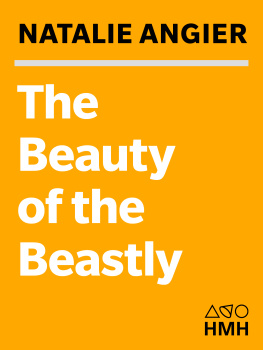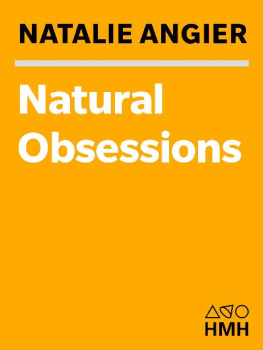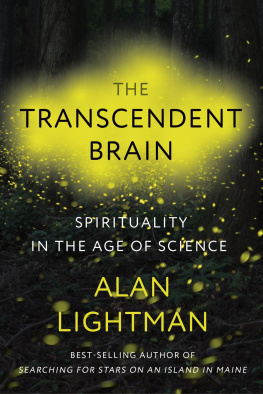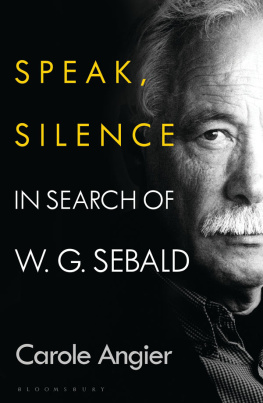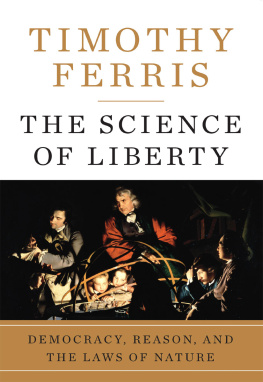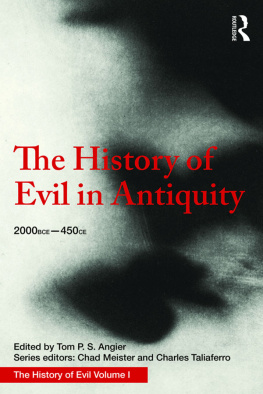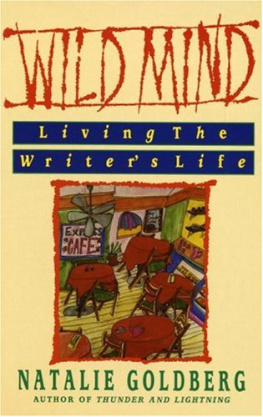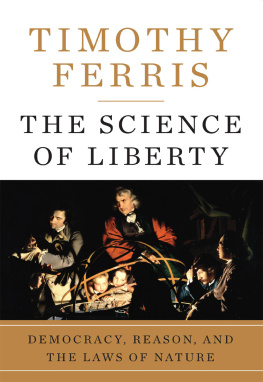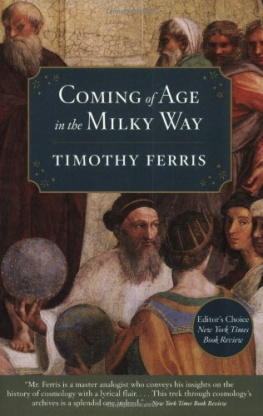Most of the material in this book is based on articles that originally appeared in the New York Times. Those articles are copyright 1989, 1990, 1991, 1992, 1993, 1994 by The New York Times Company and are reprinted by permission.
I would like to thank the editors of the Times for allowing me to write about oddball subjects that few other newspapers would touch; Peter Davison and Frances Apt for seeing the forest and pruning the trees; and the many scientists who over the years have shared with me their work, their insights, and their boundless love of nature, which comes with no strings attached.N.A.
Copyright 1995 by Natalie Angier
All rights reserved
For information about permission to reproduce selections from this book, write to or to Permissions, Houghton Mifflin Harcourt Publishing Company, 3 Park Avenue, 19th Floor, New York, New York 10016.
www.hmhco.com
The Library of Congress has cataloged the print edition as follows:
Angier, Natalie.
The beauty of the beastly : new views on the
nature of life / Natalie Angier.
p. cm.
A Peter Davison book."
Selection of revised pieces which originally
appeared in the New York Times.
Includes index.
ISBN-13: 978-0-395-579147-9
1. Life (Biology) 1. Title.
QH501.A54 1995
574dc20 94-49675 CIP
eISBN 978-0-547-52470-2
v2.0318
TO RICK, OF COURSE
Introduction
W HEN I WAS A GIRL , I had a terror of cockroaches that bordered on pathological. This was a particularly inconvenient phobia for a person who lived in a proto-slummy apartment in the Bronx, where roaches had perfected the art of arrogant accommodation among humans who would as soon squash them as see them. My father would squash them with his bare hands. My mother would wield a paper towel or a shoe. My younger brother would stamp them out with whatever tool or appendage was closest to the oily cruds. Not I. No matter how many hundreds of roaches I saw, no matter how repeatedly I reminded myself that they lacked stinging or biting parts and really could not hurt me, I jumped and screeched every time one skittered into view. I could not be in a room with a visible roach and feel at peace, nor could I bear getting close enough to one to kill it. If I opened a cupboard looking for a glass and instead found a roach, Id go thirsty. Every evening, before venturing into the dark bathroom and switching on the lightan act that would be to roaches as reveille is to sleeping soldiersI called my brother and begged him to minesweep the room ahead of time. Judging by the enthusiastic sounds of stomping and hooting coming from within, my brothers task was substantial yet not unwelcome. OK, hed say, emerging from the room and rubbing his hands together smartly, I think I got them all."
This is how profound my terror was. I once woke up in the middle of the night and saw a big roach on the edge of my pillow, heading toward me. Such brashness was unheard of: as bustling as the roach population was, it had never bustled into bed with me. I yelped and leaped to my feet, but what was I going to do now? I couldnt very well wake my brother; my parents had little patience for my squeamishness; above all, I could not kill the cockroach on my own.
I decided to cede my space to the enemy. I curled up at the foot of my bed, lying athwart it rather than lengthwise, knees to my chest, head flat on mattress. Uncomfortable and still scared, I nonetheless managed to fall back to sleep. The next morning, I saw that the roach was nothing more than a piece of crayon, which had rolled back and forth on the pillows indentation and so given me the midnight sense of something small, dark, and alive.
I tell you all this to let you know, in part, why I have named my book The Beauty of the Beastly. I hated roaches then, and I still dont like sharing living quarters with them. But in this book, I give them their moment in the sunwhether the photophobic creatures appreciate it or not. Ive learned details about cockroach biology that make me want to salute them. Their behavior, the variety of species in the family, the adaptations they have evolved to live with humans or, in most cases, without themall are part of the great cockroach saga. It is the story of persistence and resistance, of sensitivity and ceaseless change.
Change is indeed the roachs trademark. In the essay There Is Nothing Like a Roach, I mention the miraculous effectiveness of the pesticide Combat in keeping the urban roach population at bay. Combat does work better than an old-fashioned spritz from a can, but as of this writing, in late 1994, the cockroaches in my Washington, D.C., apartment are starting to get the better of the little black disks. My kitchen is polka-dotted with two dozen Combat parlors, yet some roaches survive. Either the insects have evolved a mechanism for detoxifying the poison ormy beliefthey have learned to avoid eating it. After all, I have known house mice clever enough to shun glue traps, leaping like Olympic hurdlers over a series of them in order to reach a bag of ramen noodles on the other side. Clearly these mice had learned something by watching the fate of brethren whod stepped on the traps. If mice can improve themselves through observation rather than just mutation, why not roaches? And if that elasticity, robustness, and lust for life arent beautiful, then not much good can be said for evolution, the mother of all invention, the one who stands by the side of the passing biomarathon and cries, Looking good! Keep it up! Stay alive! Stay alive.
The beauty of the natural world lies in the details, and most of those details are not the stuff of calendar art. I have made it a kind of hobby, almost a mission, to write about organisms that many people find repugnant: spiders, scorpions, parasites, worms, rattlesnakes, dung beetles, hyenas. I have done so out of a perverse preference for subjects that other writers generally have ignored, and because I hope to inspire in readers an appreciation for diversity, for imagination, for the twisted, webbed, infinite possibility of the natural world. Every single story that nature tells is gorgeous. She is the original Scheherazade, always with one more surprise to shake from her sleeve. Of course, I can record only a tiny fraction of those stories, but what I offer represents a larger plea, for all the stories that can be told, for the preservation of nature on her own terms, complete with the golems and creeps and ogres of the world, the roaches, the snakes, the bloodsuckers, the lowlifes, and the brutes.
Beyond writing about the beauty of many stereotypical beasts, I also offer evidence of the beastliness behind our conventional icons of beauty. Beloved dolphins can behave like sailors at Tail-hook; orchids advertise faux merchandise; the legendary workers of the fieldthe birds, the bees, the beaversin truth spend more time at leisure than the average European; and every creature cheats on its mate, or tries to.
But even this less than exemplary behavior is beautiful in its subtlety. There is always more to be seen behind the first pass, behind the obvious traits that show up during early observations and initially are used to pigeonhole a species or a social system or a gender. I love learning of new findings that overturn or at least complicate abiding verities, even when I may have written about those verities in the past. For example, I include in this book a story about female choice, a field of research that has exploded over the past decade or so. The idea is that the female of many species is the choosy one when it comes to picking a mate, and that her pickiness serves a central role in the evolution of many of the more exaggerated properties of the male, like bright feathers or booming voices. That assumption is predicated on the comparatively high cost of reproduction to the female. Shes the one who invests the most energy bearing and rearing young, so she is the one with the greater incentive to select her mate carefully. The disparate cost of reproduction was thought to extend even down to the sex cells. A females egg is big and filled with protein, fats, nutrients, molecular signals to start the embryo growing; a males sperm is small and efficiently packaged, nothing more than a serving of genes wrapped in a slippery protein bullet. As the old scientific truism has it, eggs are expensive, sperm is cheap. Small wonder males so often seem willing to blow their pocket change at any opportunity.
Next page
